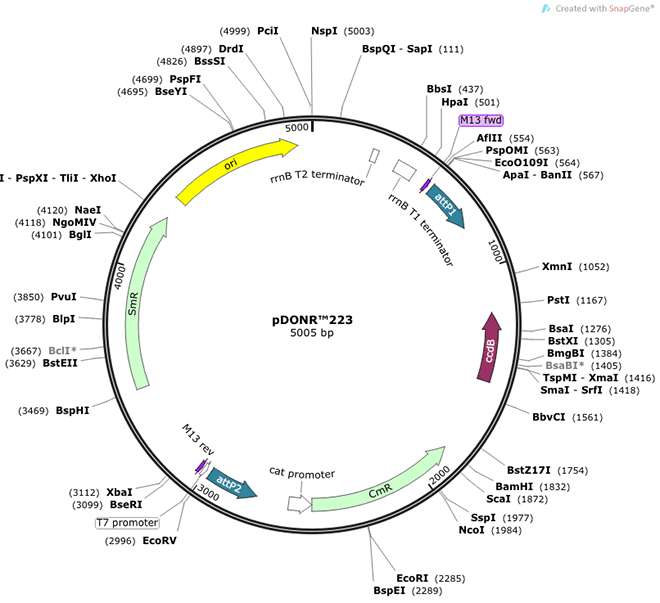The nuclear lamina consists of a two-dimensional matrix of proteins located next to the inner nuclear membrane. The lamin family of proteins make up the matrix and are highly conserved in evolution. During mitosis, the lamina matrix is reversibly disassembled as the lamin proteins are phosphorylated. Lamin proteins are thought to be involved in nuclear stability, chromatin structure and gene expression. Vertebrate lamins consist of two types, A and B. This gene encodes one of the two B type proteins, B1. Alternative splicing results in transcript variants and a duplication of this gene is associated with autosomal dominant adult-onset leukodystrophy (ADLD). [provided by RefSeq, Oct 2010]
人 LMNB1 (NM_005573) cDNA克隆
| 人 LMNB1 (NM_005573) cDNA克隆 | transcript variant 1 |
| 人 LMNB1 (NM_001198557) cDNA克隆 | transcript variant 2 |


